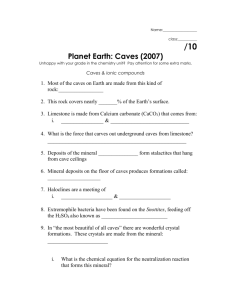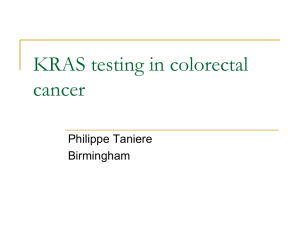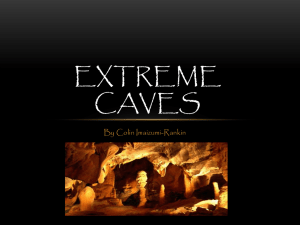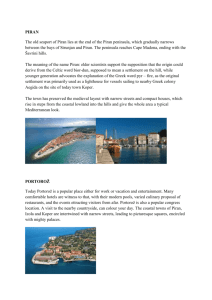Preparation (text and sources)
advertisement
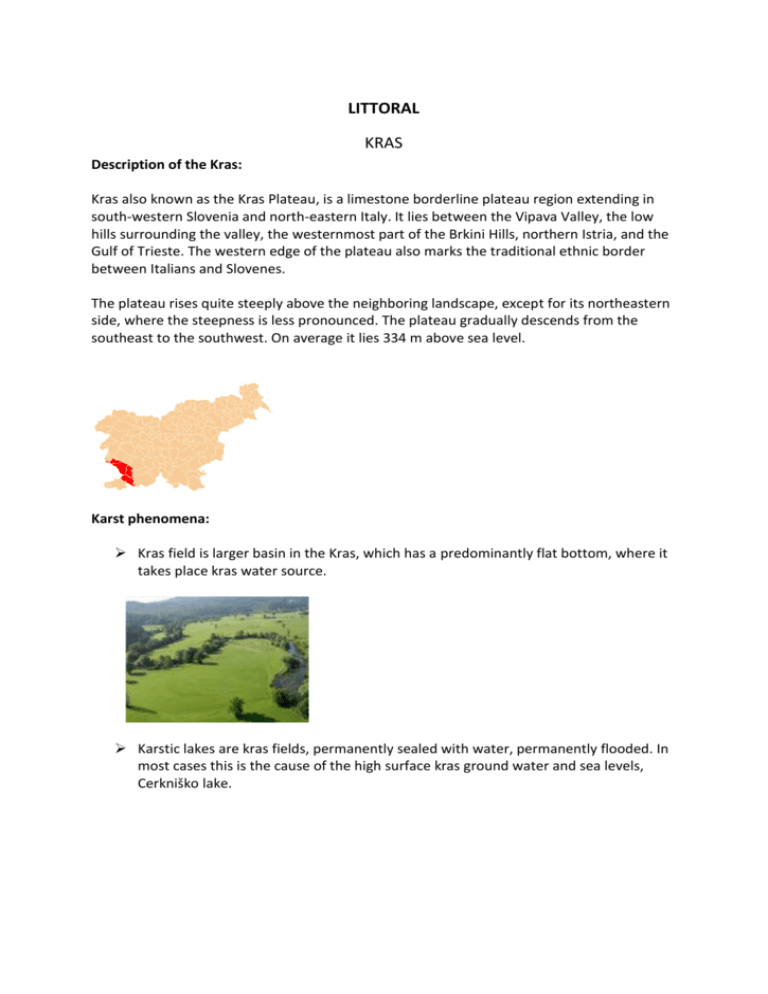
LITTORAL KRAS Description of the Kras: Kras also known as the Kras Plateau, is a limestone borderline plateau region extending in south-western Slovenia and north-eastern Italy. It lies between the Vipava Valley, the low hills surrounding the valley, the westernmost part of the Brkini Hills, northern Istria, and the Gulf of Trieste. The western edge of the plateau also marks the traditional ethnic border between Italians and Slovenes. The plateau rises quite steeply above the neighboring landscape, except for its northeastern side, where the steepness is less pronounced. The plateau gradually descends from the southeast to the southwest. On average it lies 334 m above sea level. Karst phenomena: Kras field is larger basin in the Kras, which has a predominantly flat bottom, where it takes place kras water source. Karstic lakes are kras fields, permanently sealed with water, permanently flooded. In most cases this is the cause of the high surface kras ground water and sea levels, Cerkniško lake. Bay basin is in excess of sinkholes and kras fields below. An essential feature of the bay bottom is undulating which is or is not broken by sinkholes, and steep cliffs. Sinkholes are kras hollows or basins, where the depth is less than the diameter. The size is very different: the potholes is considered to have very small holes, but there are also over a hundred feet wide cases. Attractions: In karst territory in Slovenia has so far been investigated over 6000 caves. The largest limestone caves in the Kras Divača cave, Snake pit, Lipenska cave, Škocjan caves and Vilenica. According to experts are one of the most beautiful caves Škocjan caves in the world besides the Postojna caves the most famous Slovenian Kras underworld. The Karst is famous for its caves. In Slovenia, they include Vilenica Cave (the oldest show cave in Europe), Postojna Cave, and Škocjan Caves (a UNESCO World Heritage Site). Škocjan caves Postonjska caves ŠKOCJAN CAVES The Škocjan Caves Ranking among the most important caves in the world, the Škocjan Caves represent the most significant underground phenomena in both the Kras region and Slovenia. From time immemorial, people have been attracted to the gorge where the Reka River disappears underground as well as the mysterious cave entrances. The Reka River sinks under a rocky wall; on the top of it lies the village of Škocjan after which the Caves are named . The Škocjan Caves Regional Park is situated in the Škocjan Kras, a vast flat landscape that lies at an altitude between 420 and 450 metres in the south-east of the Kras. Description of the Caves Škocjan Caves is a cave system in Slovenia. And that are long 6.2 km, depth to the lowest point is 223 m. The Škocjan Caves are a unique natural phenomenon, the creation of the River Reka. The River Reka springs from below the Snežnik flows some fifty-five kilometres on the surface. In the first part of its course on the limestone, the Reka still flows on the surface, along an approximately four-kilometre-long gorge that ends with a magnificent wall under which it disappears underground. The River Reka blind valley is the largest in Slovenia. Above the caves, between the wall above the sink and the walls of Mala dolina, lies the village of Škocjan. At the bottom of Velika dolina, the River Reka finally disappears underground and resurfaces again thirty-four kilometres away at the springs of the River Timava. Part of the Škocjan Caves in which the River Reka flows, namely the the Murmuring Cave, is only 3.5 kilometres long, between 10 and 60 metres wide and over 100 metres high underground. The length of all cave passages totals approximately 6 kilometres, while the vertical difference between the highest entrance (Okroglica abyss) and the lowest point in the caves reached by man, that is the siphon, is 205 metres. At some places, the gorge extends into underground chambers. Amazing facts The exceptional volume of the underground canyon is what distinguishes the Škocjan Caves from other caves and places them among the most famous underground features in the world. The river flowing through the underground canyon turns north-west before the Cerkvenik Bridge and continues its course along the Hanke's Channel. It is 3.5 kilometres long, 10 to 60 metres wide and over 140 metres high. At some points, it expands into huge underground chambers. The largest of these is the Martel's Chamber with a volume of 2.2 million cubic metres, it is considered the largest discovered underground chamber in Slovenia and one of the largest in the world. It is interesting to note that an underground canyon of such dimensions ends with a relatively small siphon: one that cannot deal with the enormous volume of water that pours into the cave after heavy rainfall causing major flooding during which water levels can rise by more than one hundred metres. PIRAN Piran is a city in southwestern Slovenia. It is the best preserved cultural monument of Slovenian Istria and the closest neighbour of Portorož, the luxurious city. Piran is loved by the eyes of the people and by the eye of the camera. The architecture is just beautiful, influenced by the Venetian Republic, which left its mark on most Istrian towns. Throughout time, Piran maintained the architecture: narrow winding streets, houses huddled close together, rising in cascades, the contact with the sea, numerous squares and churches. Tartini Square is the largest square in Piran. It is found in the very centre of Piran. The city is surrounded by a circular wall. Piran is a member of the European Walled Cities Association. The city of Piran is a national historical monument and it is protected. The city has population of 4,143. People earn their living mainly by tourism and some of them by fishing. Slovenia has 46km of coast line. Many events take place all year round in the open and in magnificent buildings named after famous people from Piran. The Church of. St. George, the patron saint of Piran, rises above the town. From its lookout tower you have a wonderful view of Piran and its surroundings and all the way across the sea to the Croatian and Italian Coast. You can find there two hotels, a youth hostel, a number of private rooms, churches, galleries, museums and Piran Aquarium. Tartini square Culture Piran is the birthplace of composer and violinist Giuseppe Tartini, who played an important role in shaping its cultural heritage. The town's main square, Tartini square (Slovene: Tartinijev trg ), is named after him. Piran is now the seat of the euroMediterranean Univirsity (EMUNI), founded in 2008. Piran Sources: http://www.park-skocjanske-jame.si/slo/ (23.1.2012) http://www.slovenia.info/en/kraska-jama/%C5%A0kocjanCaves.htm?kraska_jama=11459&lng=2 (25.1.2012) http://en.wikipedia.org/wiki/Piran (24.01.2012) http://www.slovenia.info/en/-ctg-kraji/Piran-Pirano.htm?_ctg_kraji=2649&lng=2 (25.01.2012) http://en.wikipedia.org/wiki/Kras (22.1.2012) Primorje Kras - Pomurska založba (Book) Mencinger B. Naravni parki Slovenije. Ljubljana (2004)

